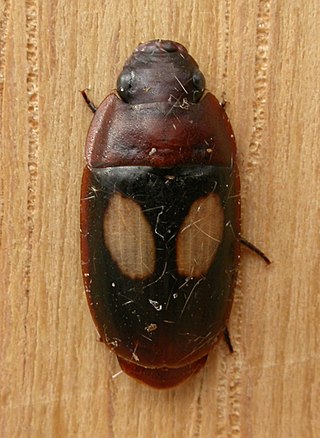
Rattus is a genus of muroid rodents, all typically called rats. However, the term rat can also be applied to rodent species outside of this genus.

Antidesma is a genus of tropical plant in the family Phyllanthaceae formally described by Linnaeus in 1753. It is native to tropical Africa, S + E + SE Asia, Australia, and various oceanic islands. The greatest diversity occurs in Southeast Asia.

Mallotus is a genus of the spurge family Euphorbiaceae first described as a genus in 1790. Two species are found in tropical Africa and Madagascar. All the other species are found in East Asia, the Indian Subcontinent, Southeast Asia, eastern Australia, and certain islands of the western Pacific. The genus has about 150 species of dioecious trees or shrubs.

Gasteracantha is a genus of orb-weaver spiders first named by Carl Jakob Sundevall in 1833. Species of the genus are known as spiny-backed orb-weavers, spiny orb-weavers, or spiny spiders. The females of most species are brightly colored with six prominent spines on their broad, hardened, shell-like abdomens. The name Gasteracantha is derived from the Greek gaster (γαστήρ), meaning "belly, abdomen", and akantha (άκανθα), meaning "thorn, spine". Spiny-backed orb-weavers are sometimes colloquially called "crab spiders" because of their shape, but they are not closely related to the true crab spiders. Other colloquial names for certain species include thorn spider, star spider, kite spider, or jewel spider.

Hersilia, also known as long-spinnered bark spiders and two-tailed spiders, is a genus of tree trunk spiders that was first described by Jean Victoire Audouin in 1826. Their nicknames are a reference to their greatly enlarged spinnerets.

Chionanthus, common name: fringetrees, is a genus of about 150 species of flowering plants in the family Oleaceae.

Therates is a genus of tiger beetles found in South and Southeast Asia.
Colasidia is a genus in the beetle family Carabidae. There are more than 40 described species in Colasidia, found in Southeast Asia.
Coleolissus is a genus in the beetle family Carabidae. There are more than 50 described species in Coleolissus, found in Asia.
Aristolebia is a genus in the beetle family Carabidae. There are more than 20 described species in Aristolebia.

Dolichoctis is a genus in the beetle family Carabidae. There are more than 130 described species in Dolichoctis.
Dicraspeda is a genus in the beetle family Carabidae. There are more than 30 described species in Dicraspeda.
Catascopus elegans is a species in the beetle family Carabidae. It is found in Southeast Asia and Australia.
Arhytinus is a genus in the beetle family Carabidae. There are more than 50 described species in Arhytinus.

Pseudomorphinae is a subfamily of ground beetles in the family Carabidae. There are about 12 genera and at least 360 described species in Pseudomorphinae.

Belisana is a genus of cellar spiders that was first described by Tamerlan Thorell in 1898.
Calapnita is a genus of Southeast Asian cellar spiders that was first described by Eugène Louis Simon in 1892.
Bowie is a genus of Ctenidae that was described by Peter Jäger in 2022. The genus was named after the English singer-songwriter and actor David Bowie and currently encompasses 107 species, 55 of which were named after elements from David Bowie's musical catalogue.









